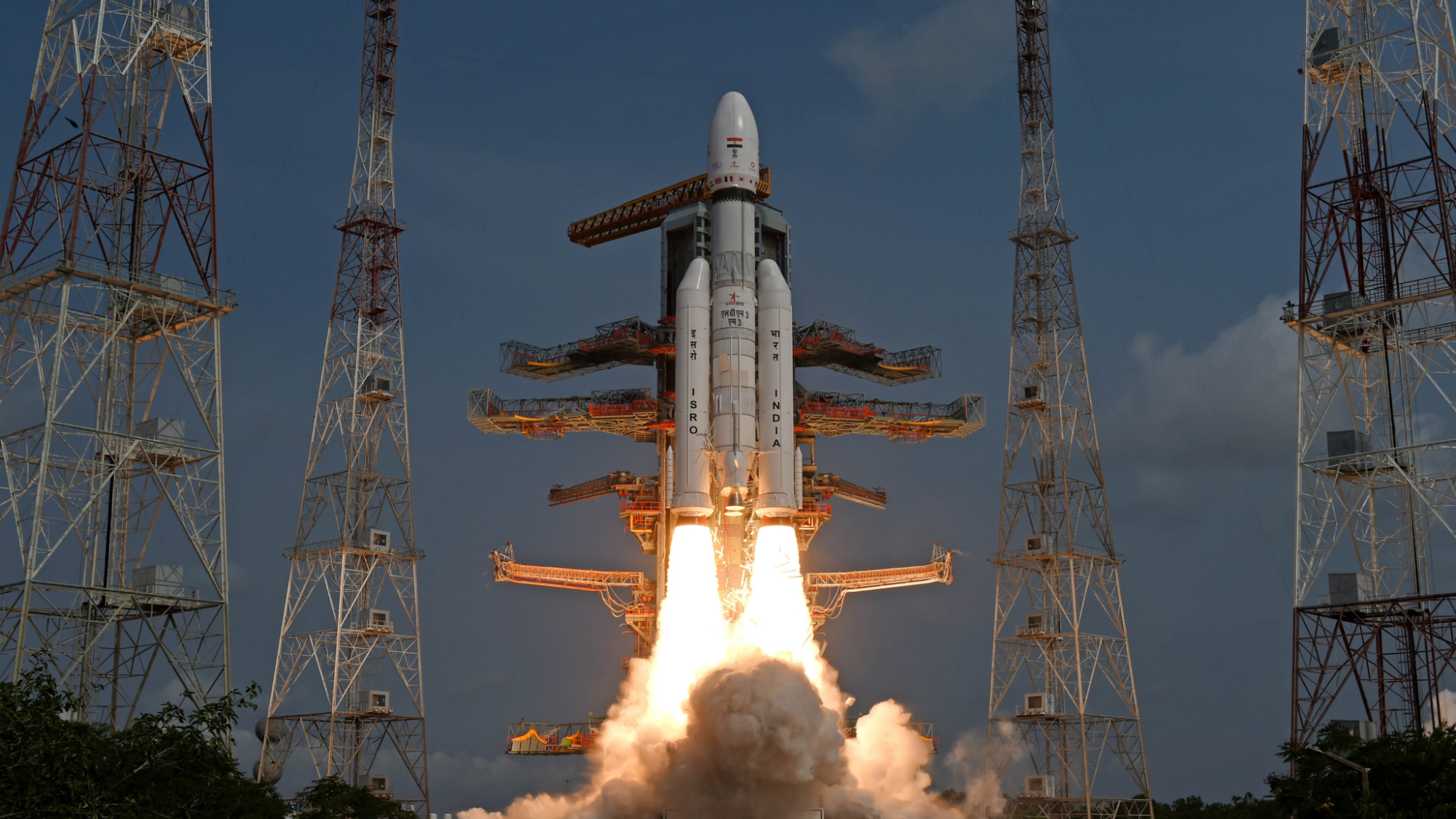India's most powerful rocket launched the final 36 satellites for OneWeb's first-generation internet constellation on Saturday night (March 25).
A Launch Vehicle Mark-3 (LVM3) rocket lifted off from India's Satish Dhawan Space Centre Saturday at 11:30 p.m. EDT (0330 GMT and 9 a.m. India Standard Time on March 26), carrying 36 OneWeb broadband satellites toward low Earth orbit (LEO).
About 90 minutes later, the Indian Space Research Organisation (ISRO) announced that all 36 spacecraft had been deployed successfully into the intended orbit, a circular path about 280 miles (450 kilometers) above Earth. The satellites will raise their own orbits over the coming days and weeks, finally settling in at an altitude of about 745 miles (1,200 km).
Related: Facts and information about ISRO, the Indian Space Research Organisation

LVM3-M3🚀/OneWeb 🛰 India-2 missionis accomplished!All 36 OneWeb Gen-1 satellites injected into the intended orbitsIn its 6th consecutive successful flight, LVM3 carried 5805 kg of payload to Low Earth Orbit@OneWeb @NSIL_IndiaMarch 26, 2023
Saturday's launch was a huge one for OneWeb. It was the 18th and final mission devoted to building out OneWeb's first-generation broadband constellation in LEO, which before Saturday consisted of 582 satellites.
"This launch will be one of the most significant milestones in OneWeb's history so far, with the launch adding an additional 36 satellites to the OneWeb fleet, the first-ever completed global LEO constellation," OneWeb representatives said in a prelaunch statement.
"By completing the constellation, OneWeb is taking a pivotal step forward in delivering global coverage," they added.
Get the Space.com Newsletter
Breaking space news, the latest updates on rocket launches, skywatching events and more!
Most of the 17 previous OneWeb launches were conducted by Russian-built Soyuz rockets operated by the French company Arianespace. But Russia's invasion of Ukraine in February 2022 sundered that partnership, impelling OneWeb to find new rocket rides for its satellites.
The London-based company soon did just that, inking deals with both SpaceX and NewSpace India Limited (NSIL), ISRO's commercial branch. SpaceX Falcon 9 rockets launched three missions for OneWeb, which is interesting, given that Elon Musk's company is building its own broadband constellation in LEO, called Starlink.
Saturday's liftoff was the second under the NSIL contract. The first, in October 2022, was also flown by an LVM3, which is also known as the GSLV MK III. ("GSLV" stands for "Geosynchronous Satellite Launch Vehicle.")
The 143-foot-tall (43.5 meters) LVM3 is India's brawniest rocket. It's capable of delivering 17,600 pounds (8,000 kilograms) of payload to LEO, according to its ISRO specifications page.
The 36 OneWeb satellites that went up Saturday weigh a total of 12,798 pounds (5,805 kg), ISRO wrote in a mission description, which you can find here.
Editor's note: This story was updated at 1:20 a.m. ET on March 26 with news of successful launch and satellite deployment.
Mike Wall is the author of "Out There" (Grand Central Publishing, 2018; illustrated by Karl Tate), a book about the search for alien life. Follow him on Twitter @michaeldwall. Follow us on Twitter @Spacedotcom or on Facebook.
Join our Space Forums to keep talking space on the latest missions, night sky and more! And if you have a news tip, correction or comment, let us know at: community@space.com.

Michael Wall is a Senior Space Writer with Space.com and joined the team in 2010. He primarily covers exoplanets, spaceflight and military space, but has been known to dabble in the space art beat. His book about the search for alien life, "Out There," was published on Nov. 13, 2018. Before becoming a science writer, Michael worked as a herpetologist and wildlife biologist. He has a Ph.D. in evolutionary biology from the University of Sydney, Australia, a bachelor's degree from the University of Arizona, and a graduate certificate in science writing from the University of California, Santa Cruz. To find out what his latest project is, you can follow Michael on Twitter.
